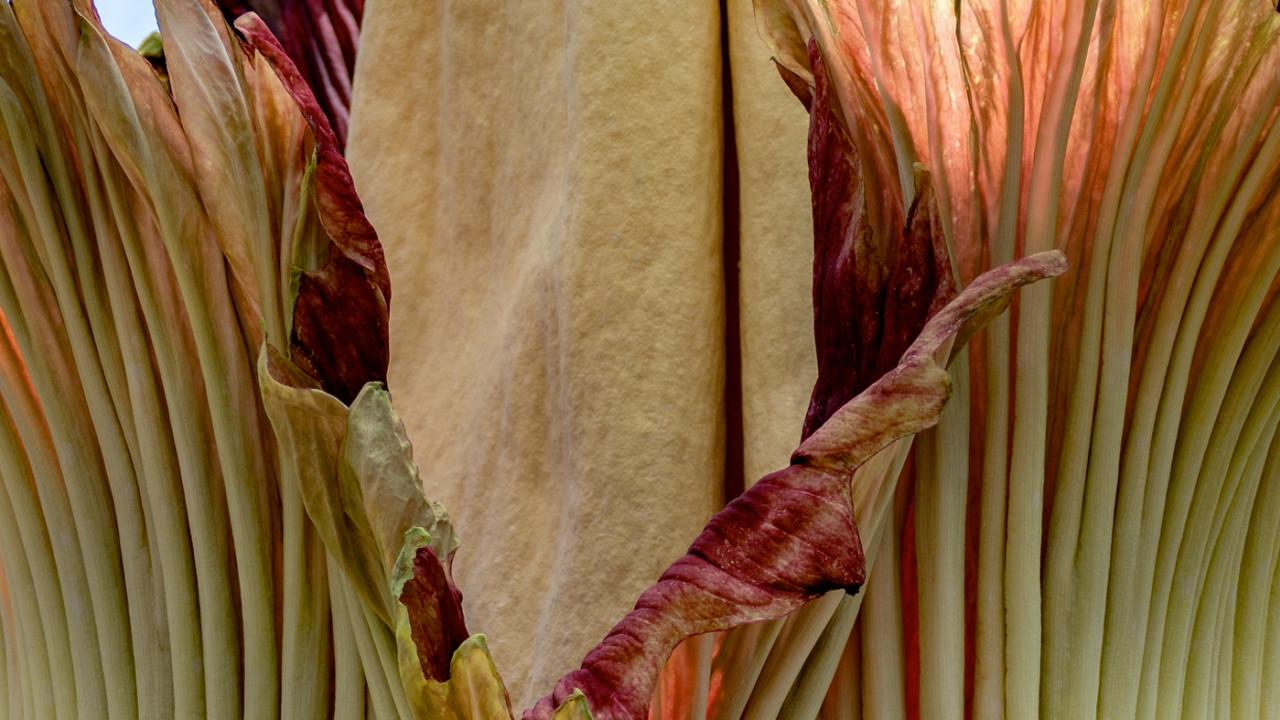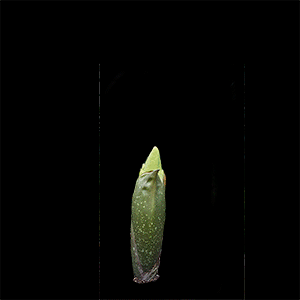
Titan Arum Educator Resources

The blooming of a titan arum is an exciting event in the botanical world. It is also an opportunity for teachers to illustrate life-science concepts using an extraordinary real-world example. The titan arum's structures, peculiar life cycle, and interrelationships with pollinators make it a marvelous story for classroom discussion.
There are several ways this story could be incorporated into classroom activities including:
- Teachers of young students can help students grasp the concept of diversity in the plant world by showing how the titan arum has the same basic parts as all plants, but they look a little different.
- Older students can compare the life cycles of different organisms to the titan arum's life cycle.
- Students can also put the titan arum bloom story into a larger context by learning about how all flowers attract pollinators using size, shape, color, scent, and other features that appeal to particular pollinators.
Click below to download, copy, and use in the classroom.
We hope educators will use these resources to draw attention to this very special plant so that students will develop a greater appreciation for all plants.
The titan arum story relates directly to the following Disciplinary Core Ideas from the Next Generation Science Standards:
Grade 1
LS1.A: Structure and Function
- All organisms have external parts. … Plants also have different parts (roots, stems, leaves, flowers, fruits) that help them survive and grow. (1-LS1-1)
Grade 2
LS2.A: Interdependent Relationships in Ecosystems
- Plants depend on animals for pollination or to move their seeds around. (2-LS2-2)
Grade 3
LS1.B: Growth and Development of Organisms
- Reproduction is essential to the continued existence of every kind of organism. Plants and animals have unique and diverse life cycles. (3-LS1-1)
Grade 4
LS1.A: Structure and Function
- Plants and animals have both internal and external structures that serve various functions in growth, survival, behavior, and reproduction. (4-LS1-1)
Grade 5
PS3.D: Energy in Chemical Processes and Everyday Life
- The energy released from food was once energy from the sun that was captured by plants in the chemical process that forms plant matter (from air and water). (5-PS3-1)
Middle School
LS1.B: Growth and Development of Organisms
- Plants reproduce in a variety of ways, sometimes depending on animal behavior and specialized features for reproduction. (MS-LS1-4)
LS1.C: Organization for Matter and Energy Flow in Organisms
- Plants, algae (including phytoplankton), and many microorganisms use the energy from light to make sugars (food) from carbon dioxide from the atmosphere and water through the process of photosynthesis, which also releases oxygen. These sugars can be used immediately or stored for growth or later use. (MS-LS1-6)
High School
LS1.A: Structure and Function
- Systems of specialized cells within organisms help them perform the essential functions of life. (HS-LS1-1)

